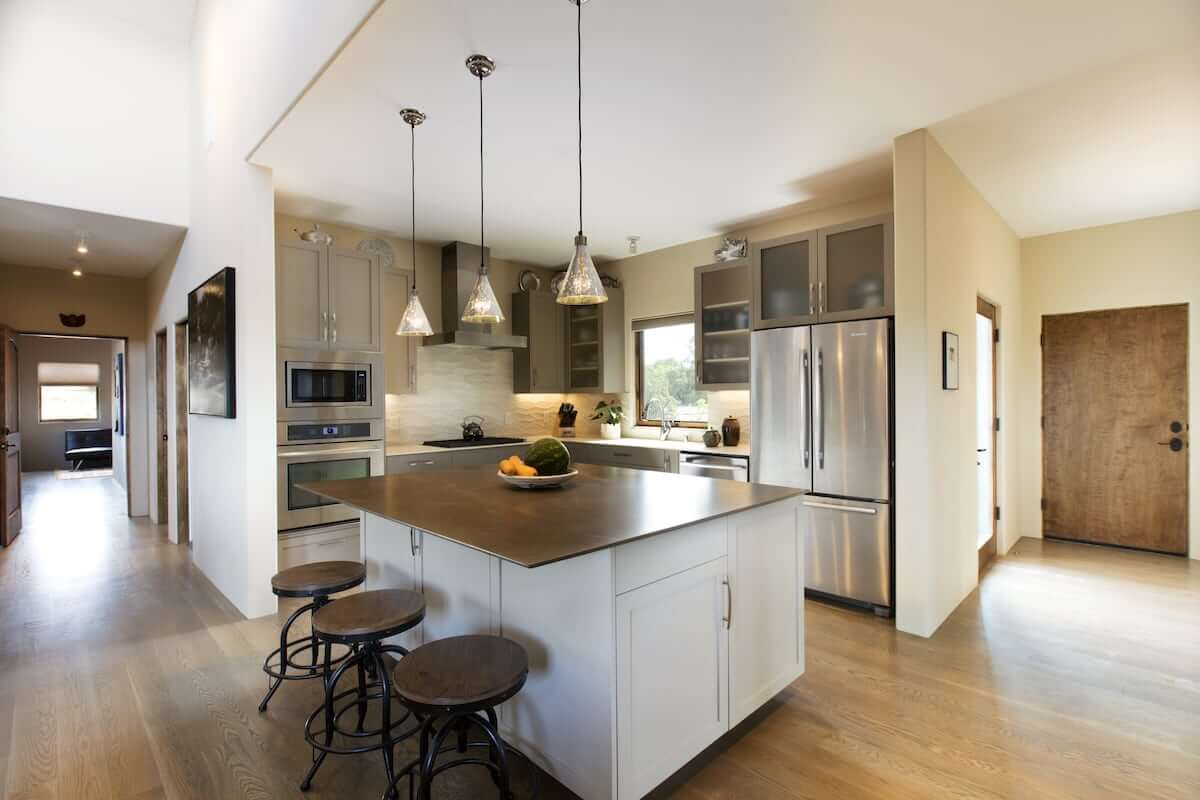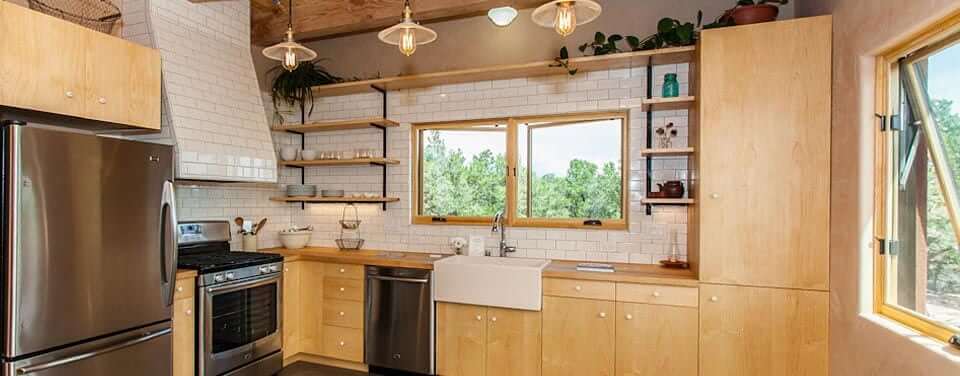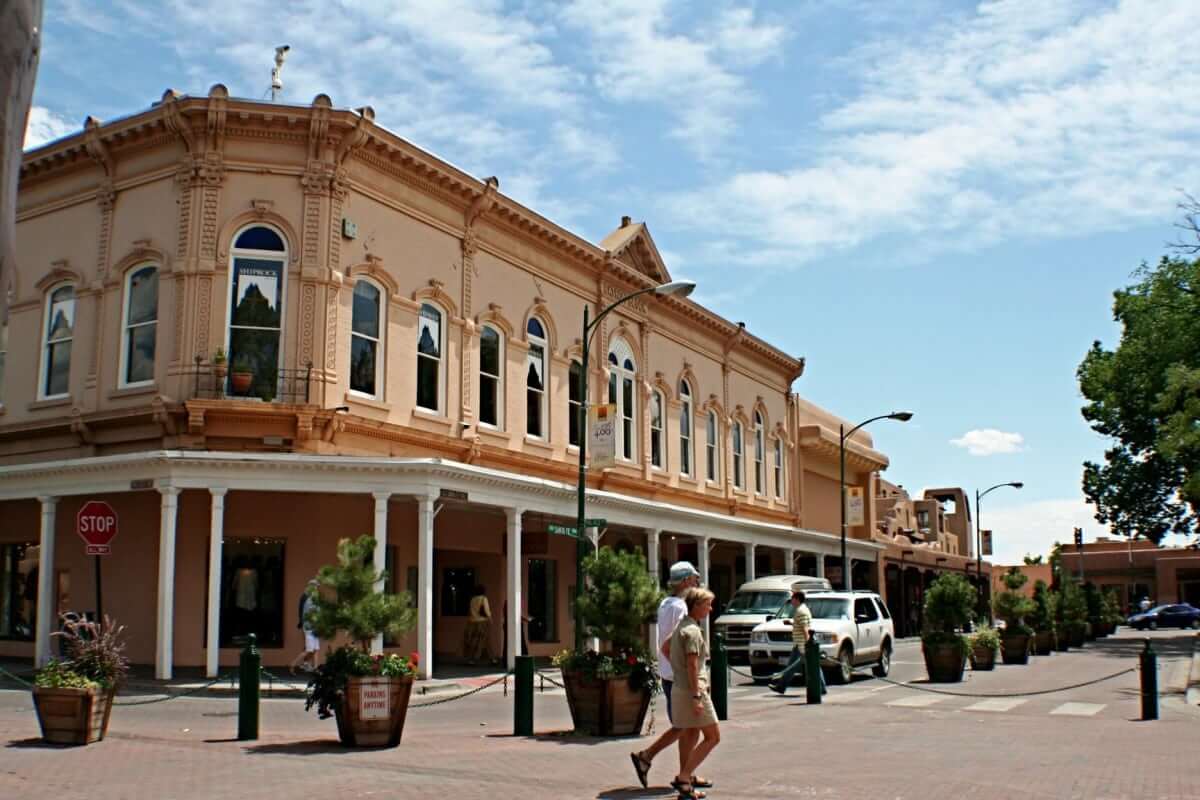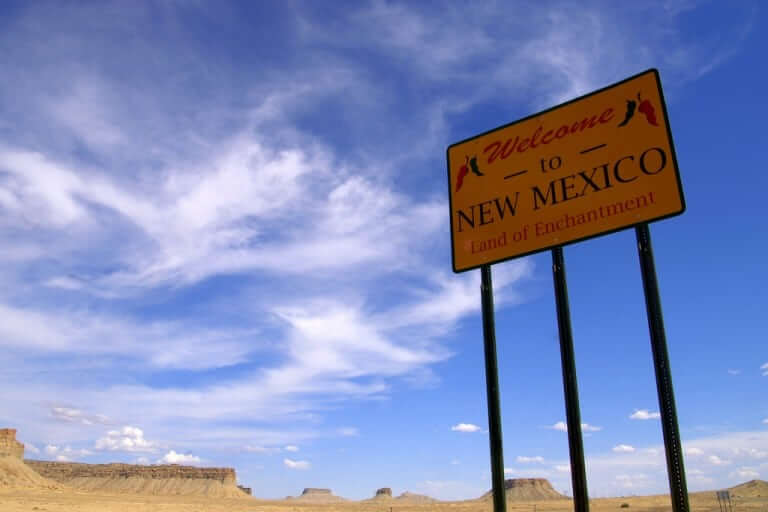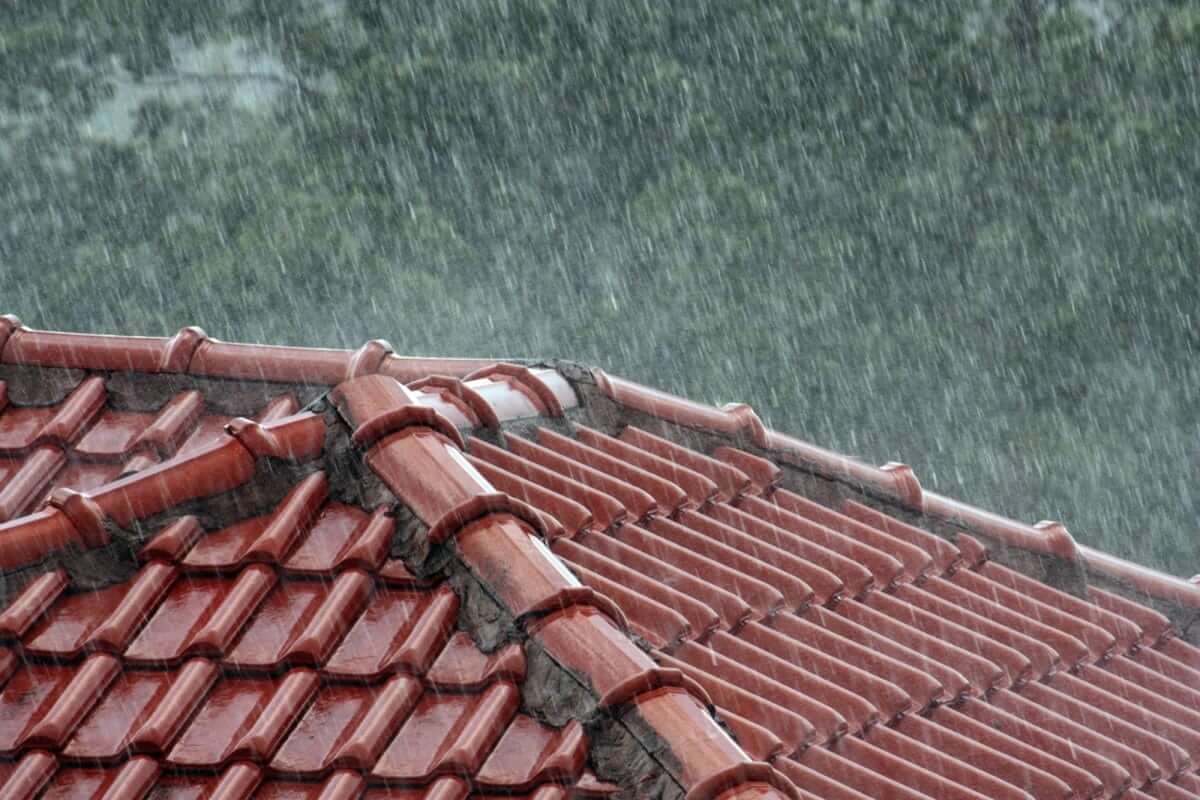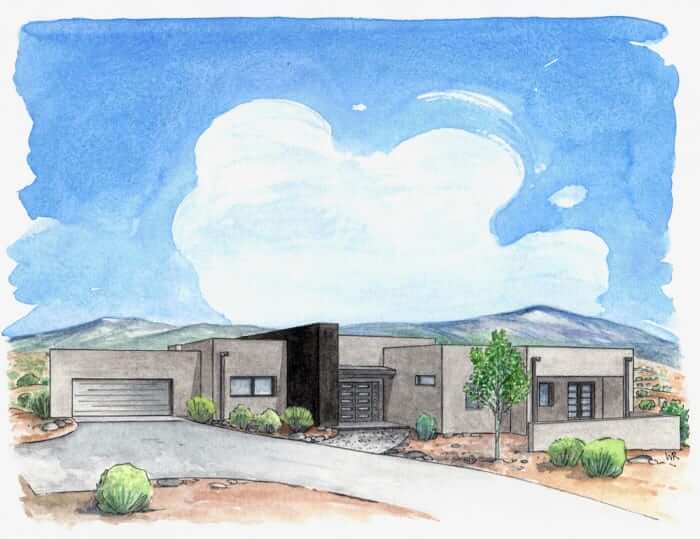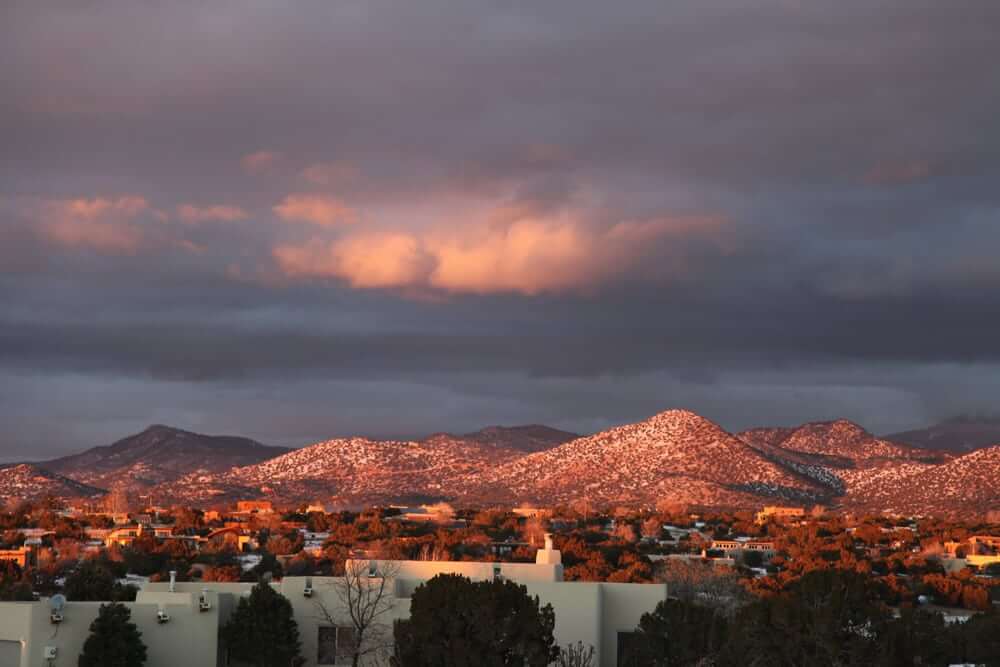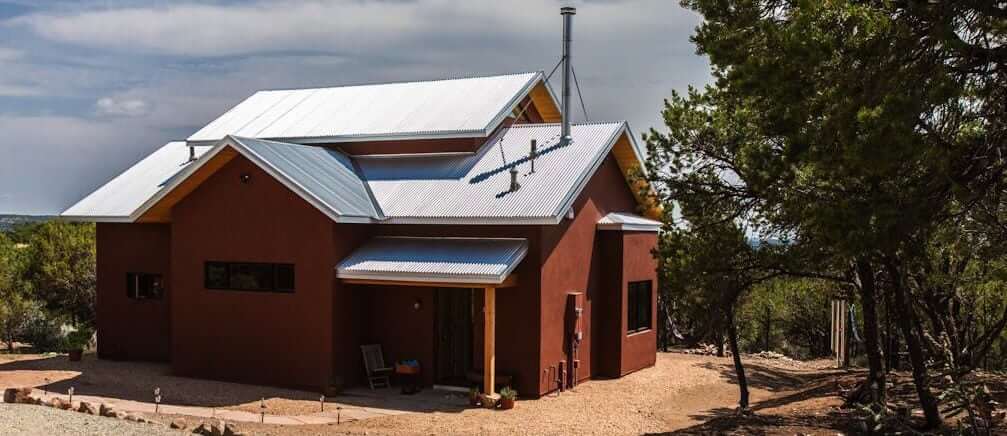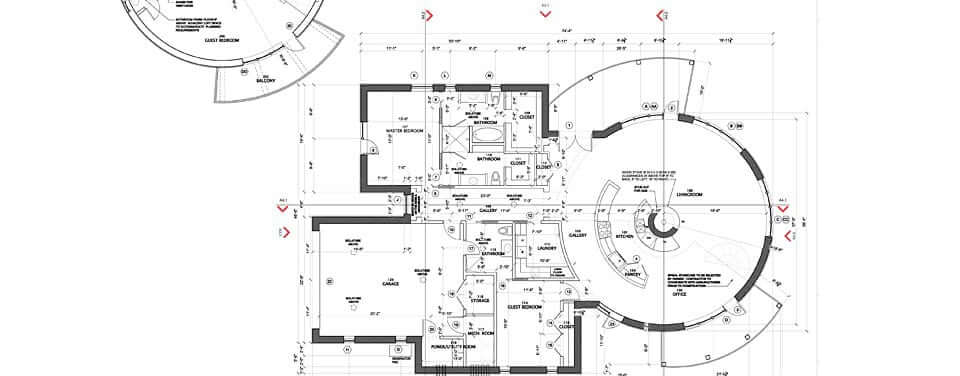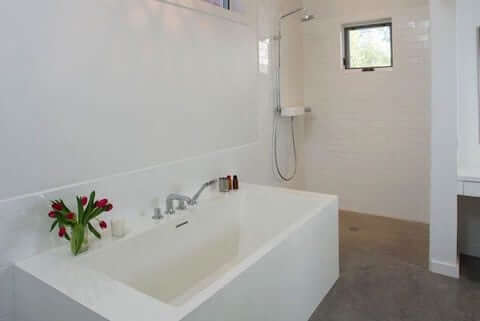At Palo Santo Designs, we pride ourselves on designing some of the greenest, most efficient and luxurious homes in Santa Fe. That’s why we often incorporate in-slab radiant heating and cooling systems into so many of our projects. A study by the New Buildings Institute found nearly half of the nation’s commercial net-zero energy buildings – buildings that produce as much energy as they consume — use radiant systems to meet their energy goals.
Using In-Floor Radiant Heating & Cooling:
In-floor radiant heating and cooling systems utilize of carefully designed network of flexible tubing set within the concrete slab to deliver heated or cooled liquids to thermostatically controlled zones of the house. Concrete slabs, being of high mass are perfect reservoirs of heat (or cool) and thus slowly radiate temperature control into the ambient space, making the home comfortable in the most energy efficient way.
To really get the most of a radiant heating and cooling system that is installed in new slab-on grade construction, the concrete slabs are of utmost importance. That’s why we employ an above-code approach to high-performance slabs, involving a number of key strategies.
Here’s a clip of a slab in progress:
Starting With An Earthen Building Pad:
For starters, we begin by creating a 95 percent compacted earthen building pad that is constructed of engineered fill to provide for long term stability. We work closely with our Geotechnical Engineer to assure the excavation and compaction methods are suitable to the soil type, thus minimizing movement (settling or upheaval) within the building over time. Few builders are willing to take the time or afford the expense of this crucial step instead of suffering the consequences later with movement, cracking or subsidence of the building over time.
Avoiding Radon in Our Santa Fe Homes:
Over the engineered building pad, we apply a two-inch layer of gravel with a continuous vapor barrier overlay that allows earth gases, including life threatening radon, to collect and be isolated from the living space. Radon vents starting below the vapor barrier and continuing within concealed walls up through the roof allows radon and other gases to escape the building without ever entering the living space, thus avoiding the accumulation of potentially carcinogenic Radon gas within the living space.
The Palo Santo Way With Insulation:
Upon the radon mitigation layer described above, rigid insulation is placed to insure that the in-floor heating and cooling applied to the slabs is transferred directly into the living space, and not lost into the earth below. Code minimum is not the Palo Santo way, so our under slab insulation is R-15 or better, creating a highly energy efficient floor that will be guaranteed to be thermally comfortable while minimizing heating and cooling costs
Upon the insulation, a layer of sand bedding allows for ideal curing of concrete, which promotes superior hard-troweled finished floors with integral color that is vastly more appealing than with typical concrete.
Needless to say, rebar and mesh installed prior to the concrete pour assures structural integrity and reduces hairline cracking. Strategically placed cut-in control joints do the same by relieving tension during the curing process, while also adding a visible architectural element similar to the look of large format floor tile.
There is nothing quite like the feel and look of a hard troweled integrally colored concrete floor. An aesthetic that works both in the ultra-contemporary or traditional Santa Fe home.




